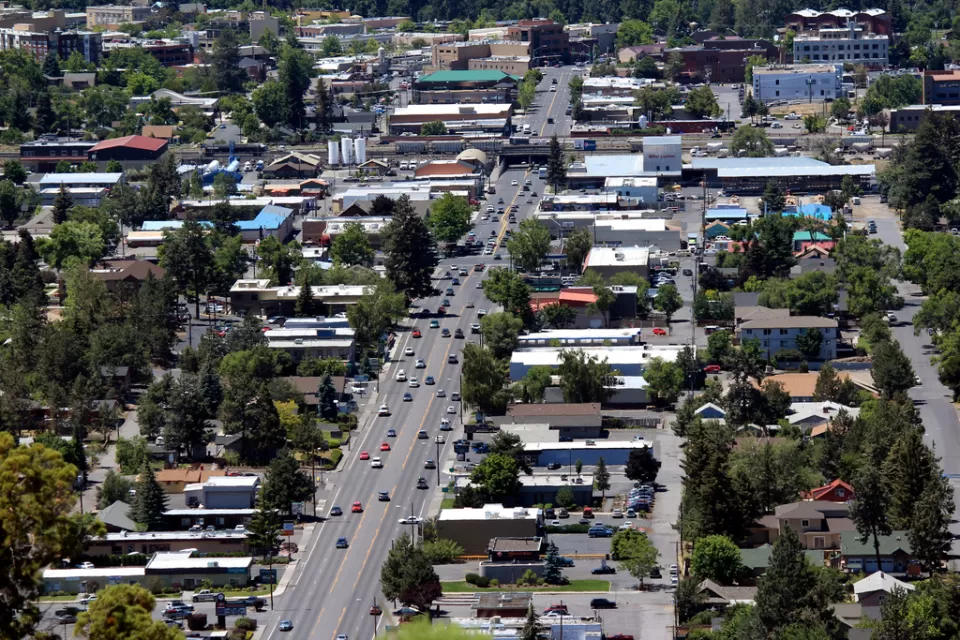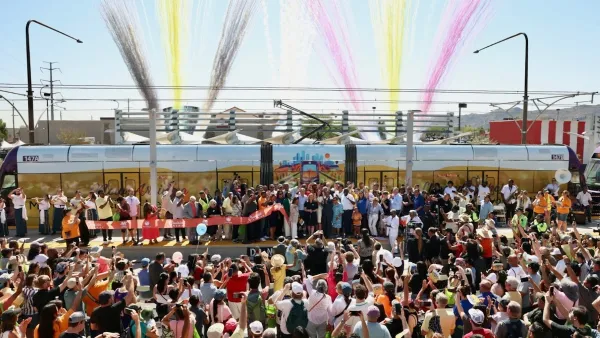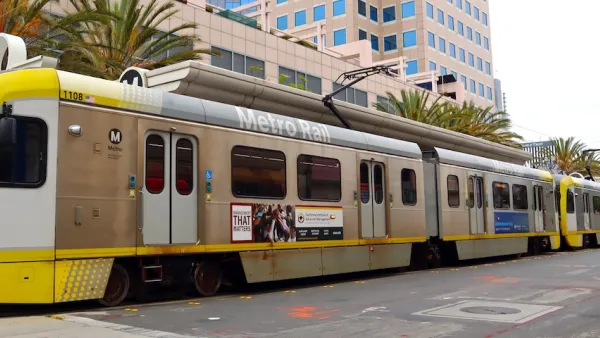Instead of asking residents to consider a timid plan this November, the region's transit agency should wait until its first light rail line opens, and gas prices rise even higher. Voters will then be ready for a grander plan, argues a recent column.
"If the Sound Transit board puts a light-rail package on the November ballot, it means the Barack Obama faction prevailed.
Oh, this has nothing to do with the presidential election directly, but it absolutely is connected to expectations of a huge turnout and the candidate's appeal to younger voters and independents: demographics as regional transit destiny.
Sound Transit first got traction in 1996, another presidential-election year. Turnout matters. After voters slapped down a package of roads and transit this past fall, there is a strong pull to try again, sans roads with a transit-friendly cohort.
The other view - one I tend to share - counsels a pause until 2010. By then, mobs with pitchforks and torches will be demanding more transit. Gas prices will resemble those in Europe, without Europe's plentiful alternatives to a car. Taking the bus or riding Sounder commuter rail will move from being mocked as a personal virtue to unvarnished economic necessity.
Most important, the 16-mile line from downtown Seattle to Sea-Tac International Airport is scheduled to open in 2009. After years of talking about how great it is going to be, light rail finally will be a visible, tangible and popular reality."
FULL STORY: A pause for the cause of light rail

Maui's Vacation Rental Debate Turns Ugly
Verbal attacks, misinformation campaigns and fistfights plague a high-stakes debate to convert thousands of vacation rentals into long-term housing.

Planetizen Federal Action Tracker
A weekly monitor of how Trump’s orders and actions are impacting planners and planning in America.

Chicago’s Ghost Rails
Just beneath the surface of the modern city lie the remnants of its expansive early 20th-century streetcar system.

Bend, Oregon Zoning Reforms Prioritize Small-Scale Housing
The city altered its zoning code to allow multi-family housing and eliminated parking mandates citywide.

Amtrak Cutting Jobs, Funding to High-Speed Rail
The agency plans to cut 10 percent of its workforce and has confirmed it will not fund new high-speed rail projects.

LA Denies Basic Services to Unhoused Residents
The city has repeatedly failed to respond to requests for trash pickup at encampment sites, and eliminated a program that provided mobile showers and toilets.
Urban Design for Planners 1: Software Tools
This six-course series explores essential urban design concepts using open source software and equips planners with the tools they need to participate fully in the urban design process.
Planning for Universal Design
Learn the tools for implementing Universal Design in planning regulations.
planning NEXT
Appalachian Highlands Housing Partners
Mpact (founded as Rail~Volution)
City of Camden Redevelopment Agency
City of Astoria
City of Portland
City of Laramie




























